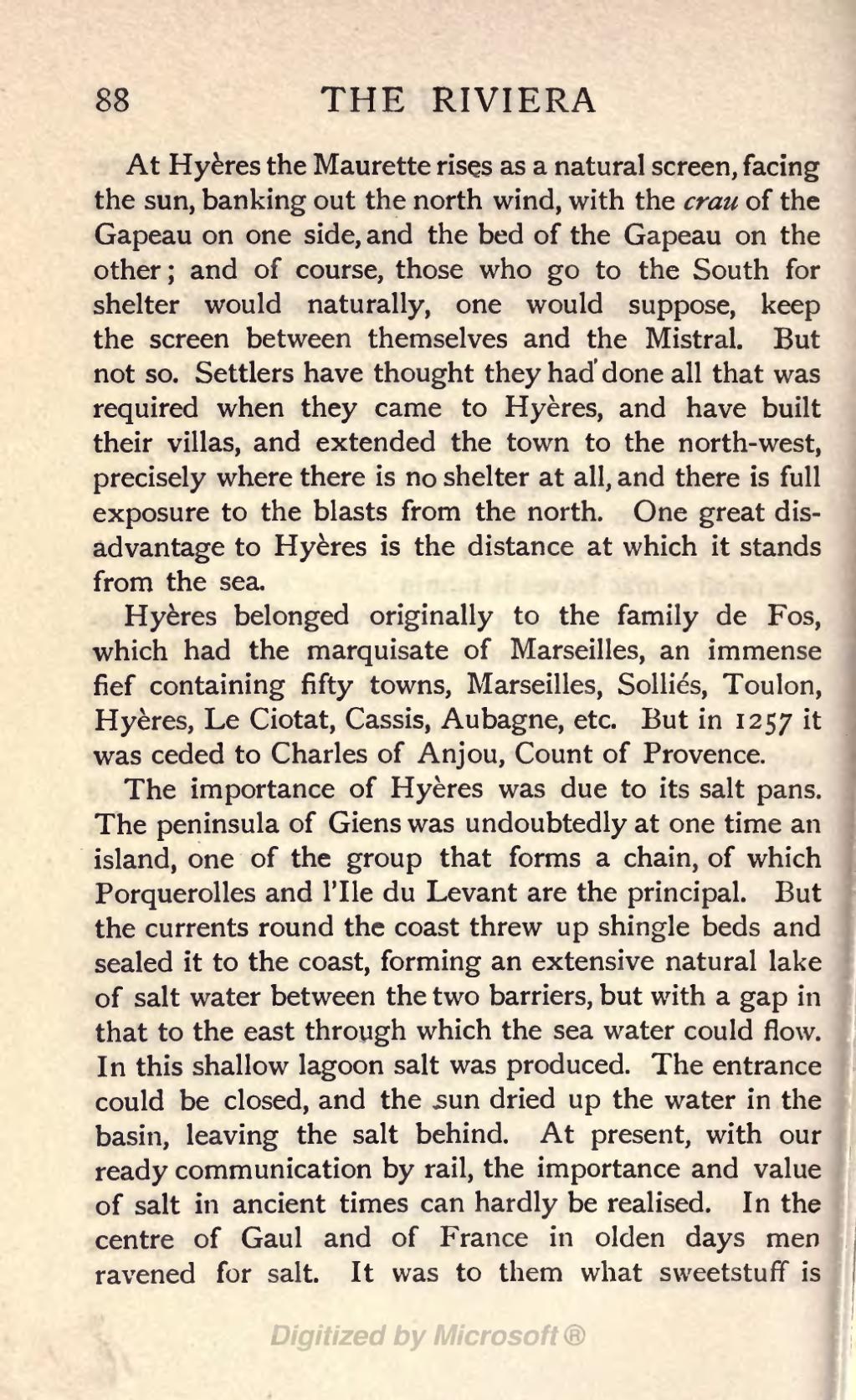At Hyères the Maurette rises as a natural screen, facing the sun, banking out the north wind, with the crau of the Gapeau on one side, and the bed of the Gapeau on the other; and of course, those who go to the South for shelter would naturally, one would suppose, keep the screen between themselves and the Mistral. But not so. Settlers have thought they had done all that was required when they came to Hyères, and have built their villas, and extended the town to the north-west, precisely where there is no shelter at all, and there is full exposure to the blasts from the north. One great disadvantage to Hyères is the distance at which it stands from the sea.
Hyères belonged originally to the family de Fos, which had the marquisate of Marseilles, an immense fief containing fifty towns, Marseilles, Solliés, Toulon, Hyères, Le Ciotat, Cassis, Aubagne, etc. But in 1257 it was ceded to Charles of Anjou, Count of Provence.
The importance of Hyères was due to its salt pans. The peninsula of Giens was undoubtedly at one time an island, one of the group that forms a chain, of which Porquerolles and l’Ile du Levant are the principal. But the currents round the coast threw up shingle beds and sealed it to the coast,forming an extensive natural lake of salt water between the two barriers, but with a gap in that to the east through which the sea water could flow. In this shallow lagoon salt was produced. The entrance could be closed, and the sun dried up the water in the basin, leaving the salt behind. At present, with our ready communication by rail, the importance and value of salt in ancient times can hardly be realised. In the centre of Gaul and of France in olden days men ravened for salt. It was to them what sweetstuff is
